Easter Island overview
Easter Island, also known as Rapa Nui, is a small triangular multi - volcanoed mound, roughly 14 miles long by seven miles wide and in total, only 69 square miles. It lies 2,400 miles west of the coast of Chile and 2,500 miles east of Tahiti. Its closest human neighbors are 1,400 miles to the west on Pitcairn Island. The 2500 permanent inhabitants have the honor of being the remotest population on the face of the Earth.
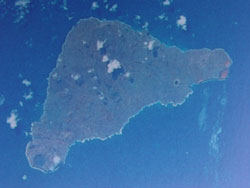 |
|
| Rapa Nui from the Space Shuttle. |
Popular wisdom is that settlers first came from Polynesia and later from South America, though this is still being debated. Regardless, one thing remains clear: they were an artistic and religious people, who left a treasure trove of art and architecture that still fascinates man today.
Easter Island is known for the human-like status, the Moai. Standing upon a burial structure known as an Ahu, the Moai average 12 to 25 feet in height. The largest known to have been transported to an ahu is 32 feet tall and weighs 50 tons. The largest Moai to have been carved, though not completed, is 65 feet in height.
Over 240 ahu, built to honor the sprits of deceased relatives, snake along the coast. The moai standing upon them all have their backs to the sea, facing and protecting the living relatives of the deceased. Uniquely, the inland Ahu Akivi, on the long slope of the volcano Tereuaka, has seven moai facing the sea and is the only such occurrence on the island. A definitive explanation for this disparity remains elusive, though modern folklore believes that they face towards Tahiti, the direction from which the first settlers arrived.
It is to be noted that modern Rapa Nui folklore suffers from revisionism.
Typically, the moai were carved out of the volcanic tuft, porous pumice-like rock, using hand picks of a teardrop design. The statues were cleverly carved from the rocks. First, the surface of the volcanic tuft was made a little softer by moistening it with water. Then, using the hand picks, a line was pecked down until it was an inch deep. This was re-done about three-quarters of an inch over. This then produces two grooves with a keel in the middle. This keel could be then easily knocked out. By repeating this process, it is possible to carve out a figure in a much quicker time than you would expect. Arguably, a wooden sled was then used to drag the statue to its proposed site and then erected by using a simple method of levers and rock piles. Folklore tells us that the Moai "walked" over the Island to their Ahu. What seems an incredible, almost impossible, task is completed using very basic technology and skill.
The island is not only a testament to its peoples' monolithic sculpting skill, pictoglyphs are also found throughout the island. The most impressive of these relief's are at the ancient ruins of the Orongo where a jumbled mass of rocks are covered with relief sculptures elaborating the rituals of the cult of the Birdman which supposedly replaced the era of the statue builders.
Civil war and ecological destruction ravaged most of the population. By the end of the 17th century, only a few of a once-vibrant and artistic people remained. Unanswered questions that cannot be ignored continue to haunt us: “Who were these people, isolated as they were, who developed an as yet un-deciphered written language, quarried stone, transported it for miles and erected statues upon burial tombs?". In short "What were they thinking?"
The population of Easter Island reached its peak at perhaps 20,000, far exceeding the capabilities of the small island's ecosystem. Resources became scarce, and the once lush palm forests were destroyed, cleared for agriculture and possibly for moving the massive stone moai. Thereafter, a thriving and advanced social order began to decline into bloody civil war, perhaps even cannibalism. Believing that the honored spirits of their forefathers could save them from starvation an explosion in the carving of Moai seems to have taken place. The statues were of ever greater height, the largest carved, though not fully excavated from the side of Rano Raraku, is 65ft in height. It is possible that these statues were never intended to be transported to an ahu. Before the Dutch Admiral, Jacob Roggeveen, "discovered" and named Easter Island in 1722, islanders, after war and social decline, had torn down most of the moai. Over the following 100 years the remaining standing Moai were pulled down, some by Europeans. A few Moai were removed from the island. Finally, in the 1960s a tidal wave destroyed many ahu along the southern coast. Ahu Tongariki was 20 meters in height and once had 25 giant Moai, some as tall as 35 feet. The tidal wave completely destroyed the ahu and washed many of the moai hundreds of feet inland whilst pulling others out to sea. Ahu Tongariki was restored with Japanese funding. All of the statues now erect on the island are the result of similar archaeological efforts.
Later contacts with western "civilisation" proved disastrous for the island inhabitants. Due to slavery and disease, the population decreased to approximately 111 by the turn of the 20th century. Following the annexation by Chile in 1888, however, this number has risen to 2,500, with other Rapa Nui living in Chile, Tahiti and North America. Despite a growing Chilean presence, the island's Polynesian identity is still quite strong.
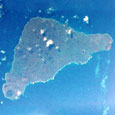 |
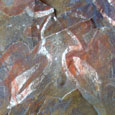 |
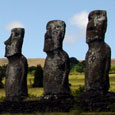 |
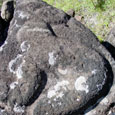 |
 |
||||
| Rapa Nui from the Space Shuttle |
Pictoglyphs | Ahu Akivi | Petroglyph | Moai |
| This website is a part of the APJ domain. Other sites include: | ||
| A Profound Journey Travel and Technology |
Jive Nation Modern Jive partner dancing in London |
I hate my cube Humorous interlude. My one man protest against working in a cubicle |
| Boston PDA user group Premier PDA user group. Information about PDAs and wireless technology. We meet at MIT in Cambridge, MA, USA |
I love marmite I hate marmite My homage to Marmite. You either love it, or you hate it |
Walker Mouldings Ltd If you want replica oak beams for your house or office, have a look here |
| Management Issues Huge online magazine about Management issues in the workplace. Created, maintained and powered by the SedaSoft SiteEngine |
SedaSoft Ltd The SedaSoft SiteEngine is an incredibly powerfull Content Management System (CMS) and website engine. |
Landmark Website created for Lambeth Borough Council, using the SedaSoft SiteEngine, to make publicly available their image archives. (Getty Images, eat your heart out ;-) |
| Copyright © 1995 - 2005 Seamus Waldron. All rights reserved. | ||

Find everything you need for your next trip to unforgettable places like India and other destinations in Europe, Asia, and Latin America, as well as essential airline and car rental information.